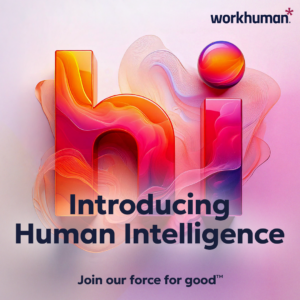
How to Grow the Soft Skills Your Team Needs to Collaborate
Building rapport, goodwill, and respect among all team members is essential for the best collaborative sessions. How do you do that? “Transparency, openness, and a

Building rapport, goodwill, and respect among all team members is essential for the best collaborative sessions. How do you do that? “Transparency, openness, and a

Sponsored by Workhuman. In today’s rapidly evolving workplace, upskilling isn’t just an advantage — it’s a necessity. Employees who learn new skills are more engaged,

On the second day of my first sales job after graduating from college, the corporate trainer said two words that sent shivers down my spine:

We’ve all heard and seen the term growth mindset in boardrooms and on LinkedIn posts, where it’s practically become a mantra in the modern workplace.

I’m just going to come out and say it: the SAP SuccessConnect 2024 (October 28-30) was a blast. Why? For one thing it reminded me

In the ever-evolving job market, hiring managers and recruiters are on the lookout for standout skills that set candidates apart. From highlighting proactivity and agility

The State of Women in Leadership: Room for Improvement We often hear about the business benefits of women in leadership roles. That isn’t just wishful

“I know what I like, and I like what I know.” It’s easy to scoff at this old saying. Yet it applies to most of

We’ve all seen the headlines. Dystopian predictions about the long-term economic impact of artificial intelligence (AI) continue to dominate the news. But what do people

Artificial intelligence (AI) is transforming organizations at a breathtaking pace. But even positive change can trigger push-back from detractors. When left unchecked, AI resistance can

Workplace evolution is natural. In its time, the digital workplace of the late 20th century was revolutionary. But that era has come and gone. And

As organizations move beyond the pandemic, workforce development is changing in fundamental ways. For example, wellbeing has emerged as a top workforce priority, and this

If you’re a business or HR leader, you’re probably facing an enormous talent management challenge. Employers everywhere are struggling to retain and upskill existing employees,

The push/pull challenge of change management is never easy to embrace. After all, resisting disruption is human nature. But the process of unlearning and relearning

In today’s fluid job market, companies everywhere are seeking innovative ways to tap into a more skilled, diverse, adaptable talent pipeline. This is a key

A career, by definition, is something that develops over an extended period of time. In other words, a successful career is not born — it

Corporate learning and development (L&D) is at a crossroads. Today’s workforce desperately needs a skills update to prepare for the future of work, and old-school

When it comes to careers, many of us no longer depend on a single source of income. In fact, people are turning to side hustles

As technology continues to evolve, so does the way we connect and work with others. One of the newest advances in technology is the metaverse,

Management advice is everywhere. But how do you know which guidance to trust? To find truly useful answers, we asked business executives to answer this

In less than 20 years, podcasting has revolutionized the way we consume and engage with informational content, offering a powerful digital platform for individuals to

When the pandemic arrived in 2020, everyone’s definition of work changed in a heartbeat. Most people headed home, leaving their offices, cubicles, water coolers, and

In today’s ever-shifting talent landscape, companies large and small are searching for more effective ways to attract, recognize, and retain their workforce. These opportunities come

In today’s fluid, fiercely competitive business environment, many organizations continuously strive to stay ahead of the curve. They know success requires an ongoing commitment to

Faced with increasingly turbulent economic times, businesses are rapidly learning the importance of strong leadership. The world has had enough problems dealing with the Covid-19